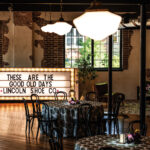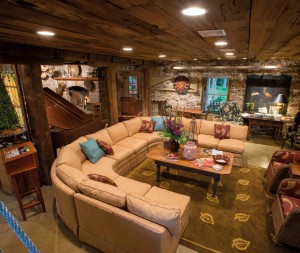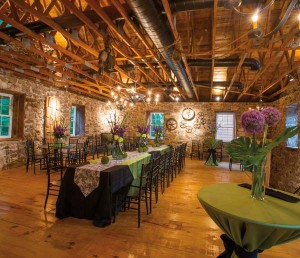Beautiful flowers are the perfect way for your dining room table to put on its party face. We asked three Lancaster County floral artists to create focal points for the Thanksgiving dinner table. The results were as unique and beautiful as their designers.
Whether you’re hosting your first Thanksgiving dinner or your 50th, to be the hostess with the mostest, you’ve got to think beyond the turkey. While that magic moment of presenting a perfectly golden-brown turkey to your guests is the Facebook photo opp, it is just a moment. The tablescape is the true star of the dinner party; it establishes your guests’ first impressions of the party, visually entertains them between courses, and provides beautiful surroundings where guests will want to linger long after the pumpkin pie has disappeared.
Jill Hoffines-Erb/Floral Designs of Mount Joy
Jill envisioned a color story of white, silver and plum to dress the table with unexpected style. The owner of Floral Designs of Mount Joy credits her staff’s daily collaboration with stimulating her creativity. “We challenge each other,” she says, noting that a non-traditional approach is a hallmark of her 13-year-old floral design business. Using natural and organic products are also priorities whenever possible, and here the use of fall’s local bounty combines with the grace and elegance of Phalaenopsis orchids.
Jill recommends echoing the design in the table’s place settings, perhaps with each guest’s place card displayed in a fresh plum. The arrangement’s color story, which is displayed in tall and texturized vessels, could certainly extend into the holiday season, making it a dazzling focal point for a New Year’s Eve buffet table as well.
102 E. Main St., Mount Joy, 653-1950, Floraldesignsofmountjoy.com
Lori Witmer/ Wildflowers by Design
“Simple and natural” are Lori Witmer’s touchstones in her design work as the owner of Wildflowers by Design. Focusing on weddings, parties and corporate events, Lori loves to “combine things gathered from the garden into lush, textural, romantic groupings.” She and her husband recently took ownership of three acres of Maytown farmland, where she intends to grow much of the produce and flowers that she most treasures for her designs. “Heirloom and old-fashioned varieties are my favorites,” she says, naming poppies, sweet peas, dahlias, vines and roses as her go-to’s for the “recipes in my head.”
Often using thrift and vintage resources for her vessels, Lori chose hand-turned wood to contain her garden-to-table design that was inspired by “thinking of fall’s cozy, chunky knits.”
Carol Godshall/English Garden Floral
Carol came to her career in floral design on a convoluted path as an educator and mother, then manager, buyer and finally designer at a local floral shop. When the shop was sold, Carol opened her own studio, English Garden Floral, in Manheim, where she specializes in social events and providing fresh floral beauty to business clients on a regular schedule.
“Flow” is inspirational to Carol’s design work, and is the basis for this abundant, textural arrangement that seems to spill out of its vintage metal vessel. “I’ve grown tired of the tight, no-foliage look,” she says. “I like to see some outward flow rather than all round.” From every angle, Carol’s arrangement offered delightful peeks of nearly hidden details like cabbage or gourds, making it difficult to choose which side to photograph!
Englishgardenfloral.com, 898-8387






















